I recently ran a test to investigate why the rfm22b often fails at low temperatures, with some interesting results.
The radio module was set up in a test chamber and cycled from +20 to -50 degrees Celsius and repeated 5 times. The board was powered and the output frequency monitored and logged using an SDR.
The above results were surprising, as I was expecting the rfm22b to drop out around -40, however it carried on transmitting just fine all the way to -50. However as the temperature rose back out to ambient the module stopped transmitting as the temperature passed about -10. This happened consistently 4 out of the 5 times tested. I believe this is caused by dew forming on the crystal and pulling the frequency way out. You can see the frequency clearly shoot off to the side in this screen capture:
You can see in the graph below how the temperature affected the frequency, and where the module dropped out. I have also put together a time lapse of the SDR output to illustrate the drifting.
Test data spreadsheet: rfm22b_test_data.xlsm

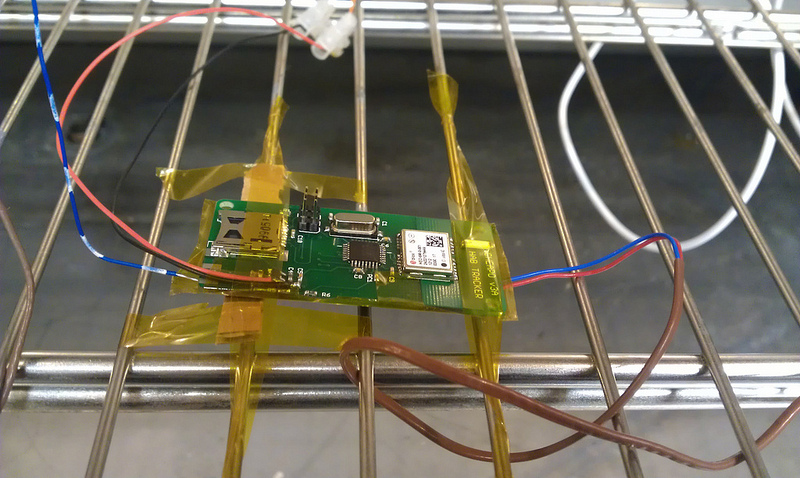
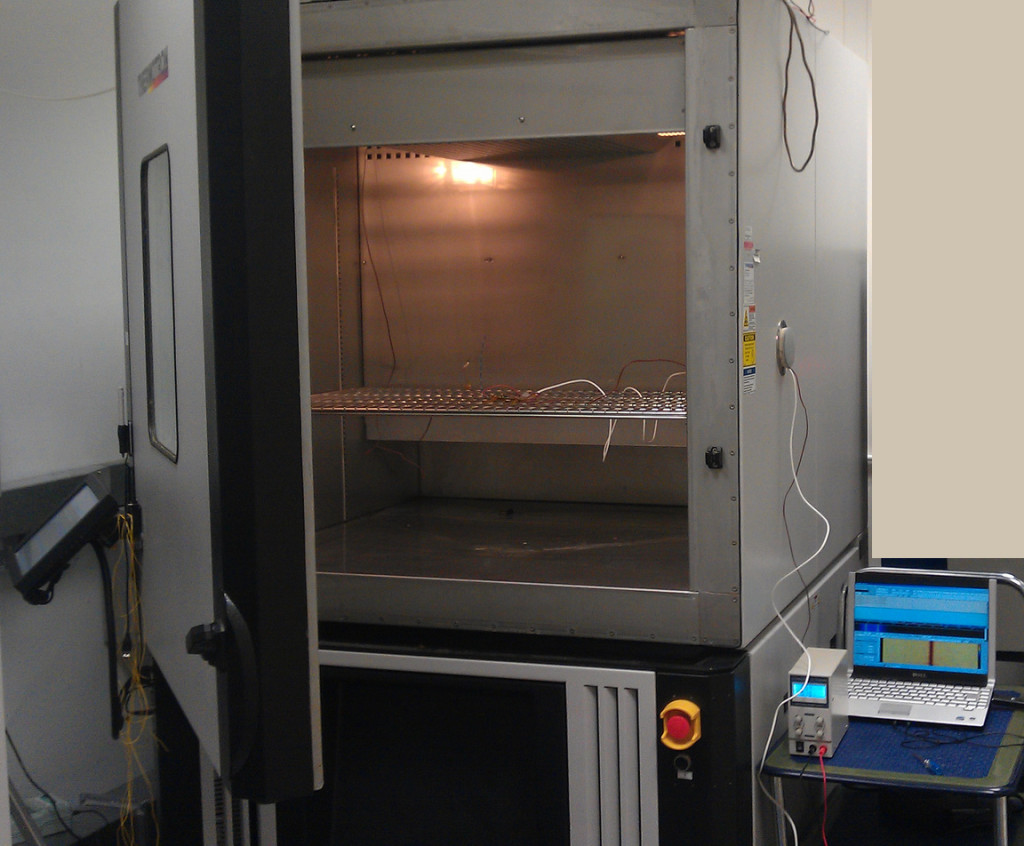
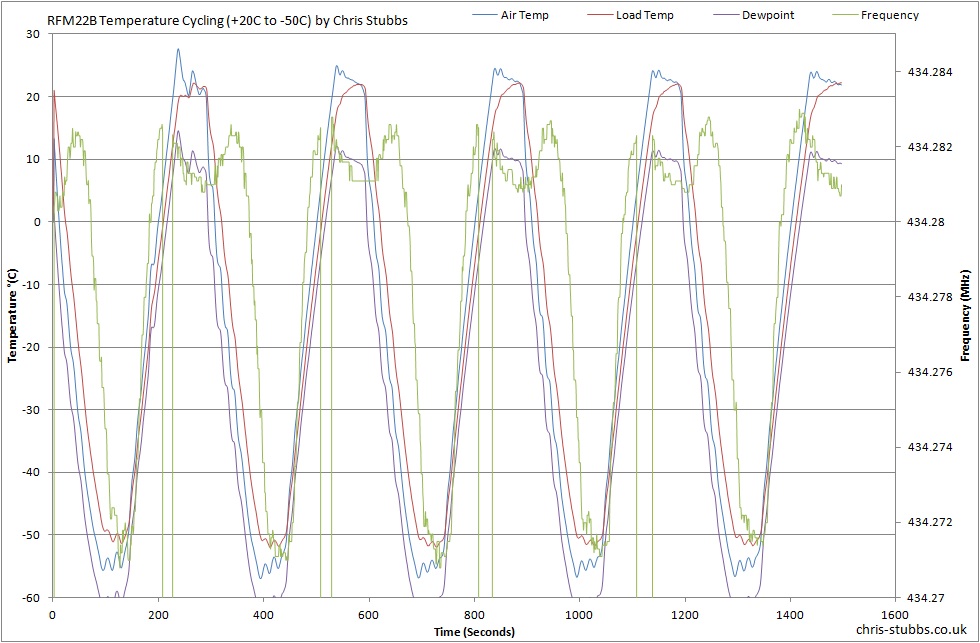
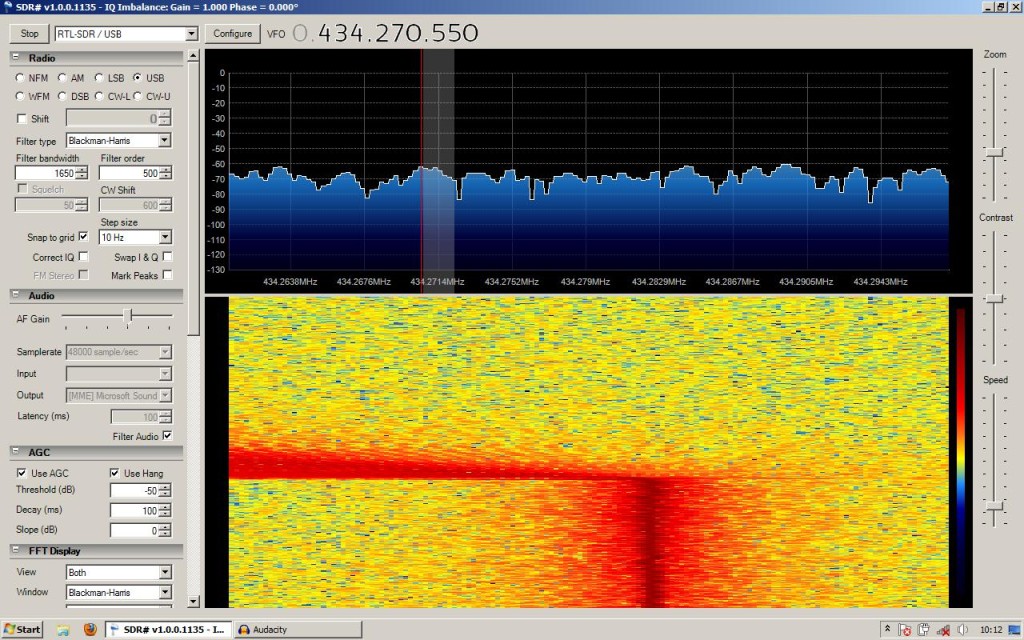
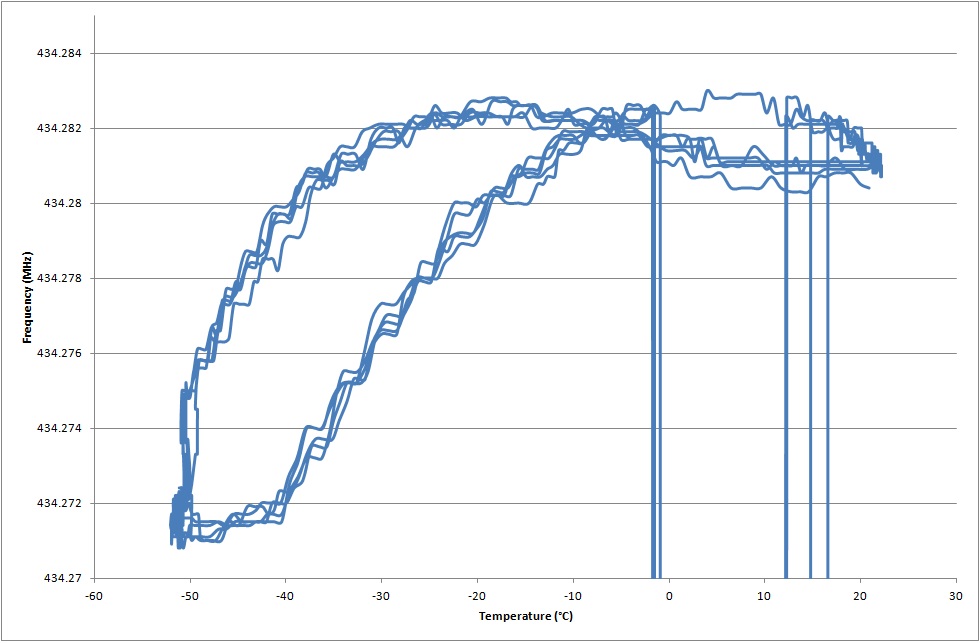
If this problem is caused by dew, did you try potting the crystal and/or other sensitive parts in something? Some silicone grease or liquid insulating tape might be enough to fix the issue.
Ugi
Military and Space systems use conformal coating to protect against moisture. Popping electronics in a bag with a desiccant stops moisture problems during thermal cycling tests like this, another approach is to use a continuous dry nitrogen purge of the chamber (but then nearby personnel need Nitrogen leakage safety alarms).
Pingback: High altitude ballooning group launch pair of balloons to Belgium this time – Imperial College Space Society